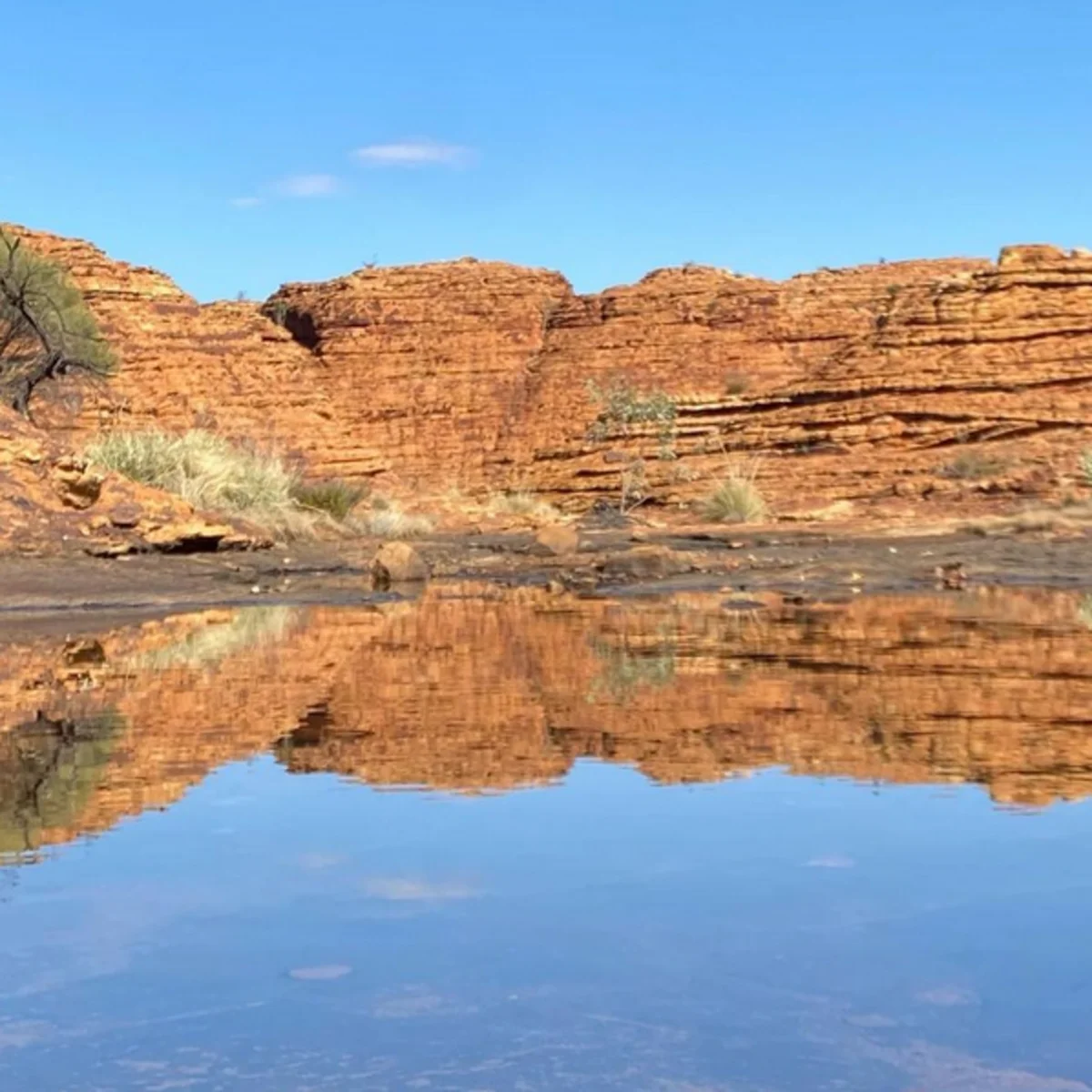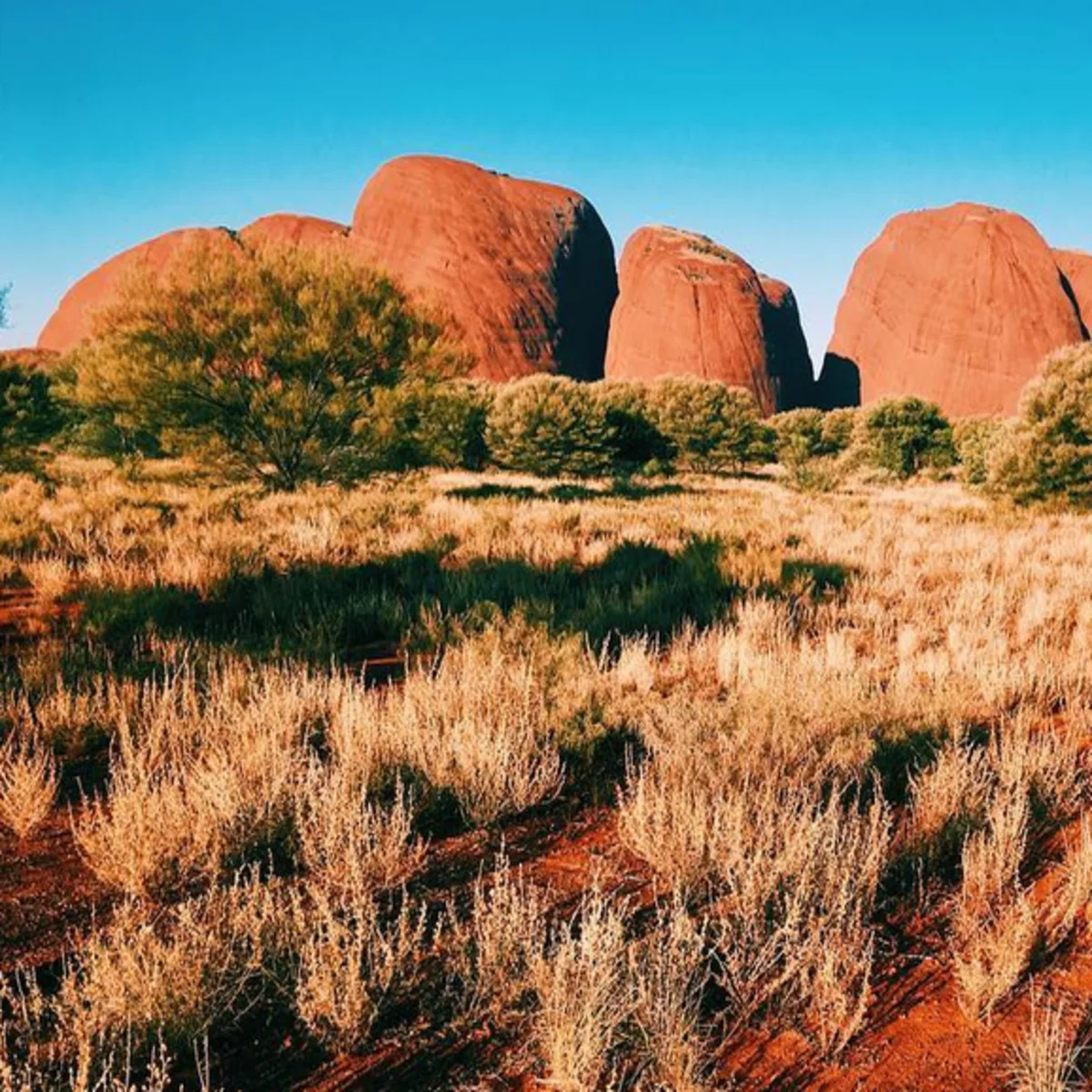Uluru, or Ayers Rock as it's also known, is one of Australia's most iconic landmarks. But there's another natural wonder nearby that's well worth a visit if you take an Uluru tour of the region.

The Olgas are in the Northern Territory
Kata Tjuta is a group of large domed rock formations located southwest of Alice Springs in the Uluru-Kata Tjuta National Park. It is considered a sacred site by the Aboriginal people of Australia and consists of 36 domes, with Mount Olga being the tallest at 1,066 meters.
The Olgas, located 35 kilometres west of Uluru, is believed to have been part of a more extensive rock formation that has weathered and eroded over millions of years. The Olgas are made of a different type of rock than Uluru.
The landmark has a long history with many stories surrounding it. In addition, visitors can enjoy the stunning scenery of dusty red dunes and greenery and learn about the various legends associated with Kata Tjuta and Uluru in the area.
Kata Tjuta is also known as The Olgas
Visitors typically know Kata Tjuta as The Olgas, named after its highest peak, Mount Olga, which stands a notch above its fellow formations.
In 1872, Ernest Giles christened Mount Olga in honour of Queen Olga of Wurttemberg. However, in the 20th century, the formations were also dubbed Kata Tjuta, a nod to their Aboriginal significance and the moniker of a Russian queen. 'Kata Tjuta' translates to 'many heads' in the local Indigenous language, reflecting the multitude of domes that comprise this natural wonder.
Kata Tjuta legends are famous
The landscape surrounding Kata Tjuta and Uluru is considered sacred by the Aboriginal people of Australia, leading to the circulation of numerous dreamtime stories about them.
Legends of the snake king Wanambi exist, with tales of him residing at the top of Mount Olga and only descending to ground level during the dry season. His breath was believed to turn a breeze into a hurricane, punishing those who committed evil deeds in the region.
The mythology surrounding the Olgas is kept confidential by the Aboriginal community, with specific traditions prohibiting women from learning about certain aspects to avoid potential harm.
The Anangu Aboriginal peoples view Kata Tjuta as a place of spiritual significance, believing it to house energy from the 'Dreaming'. Cultural ceremonies have resumed at the site since 1995, following a hiatus.
Exploring the Olgas
Kata Tjuta, known for its rich Aboriginal history and stunning scenery, is a must-visit destination in Australia. Visitors can learn about Dreamtime stories and legends that still hold significance in the area today.
The structure rises to over 546 meters above ground level, with Mount Olga as its highest point, over 200 meters higher than Uluru. Its circumference is approximately 22 kilometres, making it more extensive and impressive than Uluru.
The Olgas feature deep crevices between the jutting peaks, offering breathtaking and prehistoric views for visitors to explore.

The region offers a variety of walking trails that provide stunning views, although some have been closed to protect the landscape. Visitors can still enjoy up to 7 kilometres of trails, including the famous Walpa Gorge Walk, which is relatively easy at 2.6 kilometres long.
Visitors can explore the Valley of the Winds on a longer trail that offers fantastic viewpoints. The walk takes around three hours and can be hot, but the lush foliage between the spires of the Olgas is worth seeing. Views can be experienced from the Kata Tjuta Dune viewpoint near the car park for those not wanting to walk in the heat.
Located 200 kilometres south of Alice Springs, Kata Tjuta is a popular stop on Uluru-Kata Tjuta tours. The Olgas provide a close-up look at the unique rock formations of both Kata Tjuta and Uluru. The sandstone at Kata Tjuta changes colours like Uluru, with vibrant hues at sunset. Remember the long drive from Alice Springs to Kata Tjuta and Uluru if you visit alone. It takes 4 1/2 hours to reach the Olgas from Alice Springs.
When visiting the Red Centre, exploring the Olgas and learning about their significance to the community is essential.